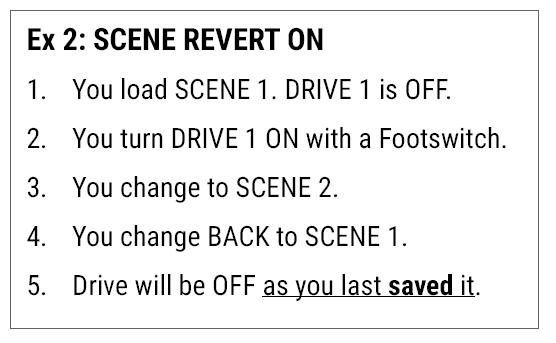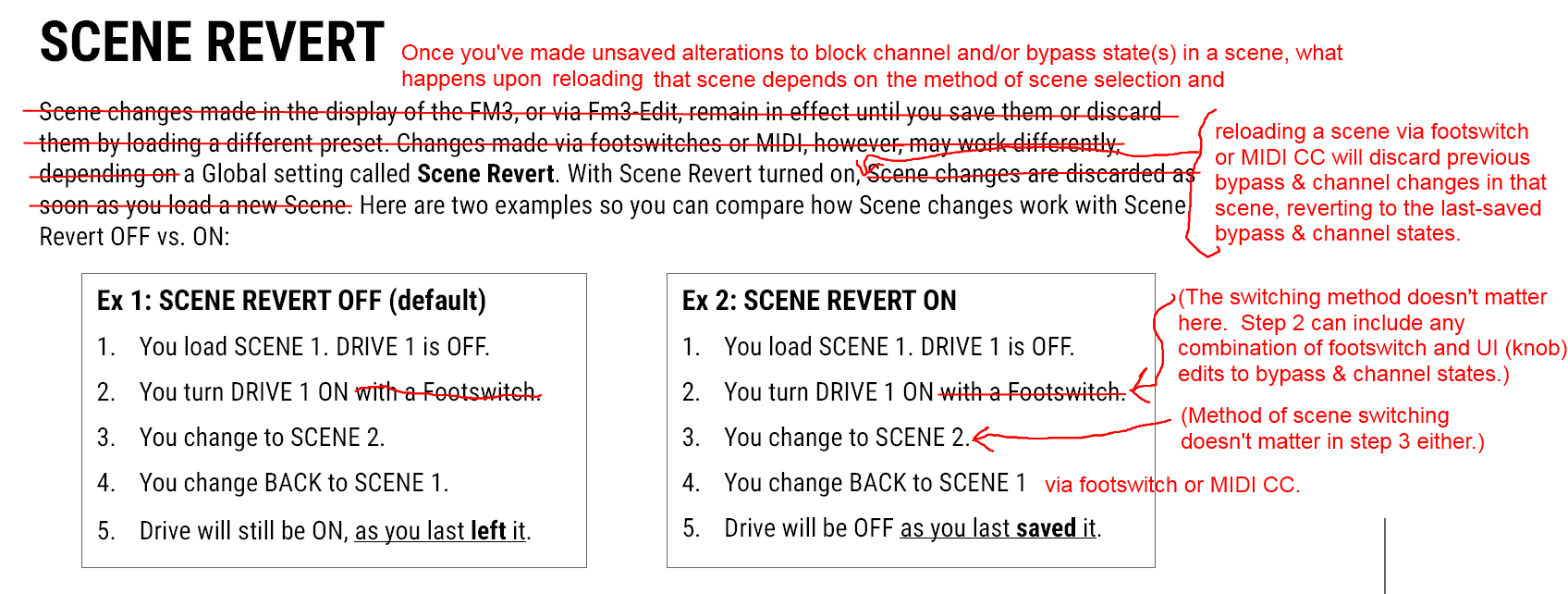Rublalup
Inspired
Hi guys,
When I’m editing a scene (changing channels of a block, or bypassing blocks) if I don’t save the presets while on that scene and go to another scene and then back the changes are losed.
Let’s say I’m on scene 2 and want to change the reverb block from channel A to B. I can change it to B and it “stays” as long as I don’t change scenes. If I save the preset while I’m scene 2 the change is storaged but if
Before saving I go to scene 1 and then back to scene 2 the Reverb channel will revert to A.
I have scene revert on, but according to the manual that shouldn’t affect the changes made in the display.
Thanks
When I’m editing a scene (changing channels of a block, or bypassing blocks) if I don’t save the presets while on that scene and go to another scene and then back the changes are losed.
Let’s say I’m on scene 2 and want to change the reverb block from channel A to B. I can change it to B and it “stays” as long as I don’t change scenes. If I save the preset while I’m scene 2 the change is storaged but if
Before saving I go to scene 1 and then back to scene 2 the Reverb channel will revert to A.
I have scene revert on, but according to the manual that shouldn’t affect the changes made in the display.
Thanks


